
Cloud-based risk management software for a nuclear power plant
Automating risk assessment and management workflows within a centralized cross-platform web application designed and deployed in two months.
Table of contents
Challenge
Our customer is a UK-based provider of technological and engineering services. The company focuses on maritime, oil and gas, nuclear energy and other process-centric industries, helping them increase the efficiency of their operations. The company also provides independent validation and certification services to ensure businesses comply with industry standards and regulations.
Our customer had been providing their services to the owner of a power plant that was using a risk management system in their daily operations. To ensure this company could keep up with the latest safety regulations, our customer went for improving the risk management solution.
They chose Itransition as their long-term software development partner with a relevant expertise in industry-centric business intelligence development. The goal was to develop a cross-platform risk assessment and management system compatible with MacOS and Windows OS. Itransition was challenged with a tight deadline: the team had to release the operable solution in just two months.
Solution
The solution is a web application for filtering, evaluating, and managing events registered at the plant’s units.
The application provides features for three user groups:
- Risk control experts
- Risk management experts
- Risk watchers
The application supports four user roles:
- Approvers
- Reviewers
- Editors
- Viewers
All events occurring at the power plant are registered in the application. They are divided into three categories:
- An initiating event
- A mitigation system
- Barrier integrity
Event categorization depends on the event’s location. All risks are evaluated against two key criteria: the potential danger and urgency of an event. Event watchers identify risk levels depending on how an event can impact the plant operation. The application also allows users to analyze and visualize reports regarding registered events and risks over a specific period of time.
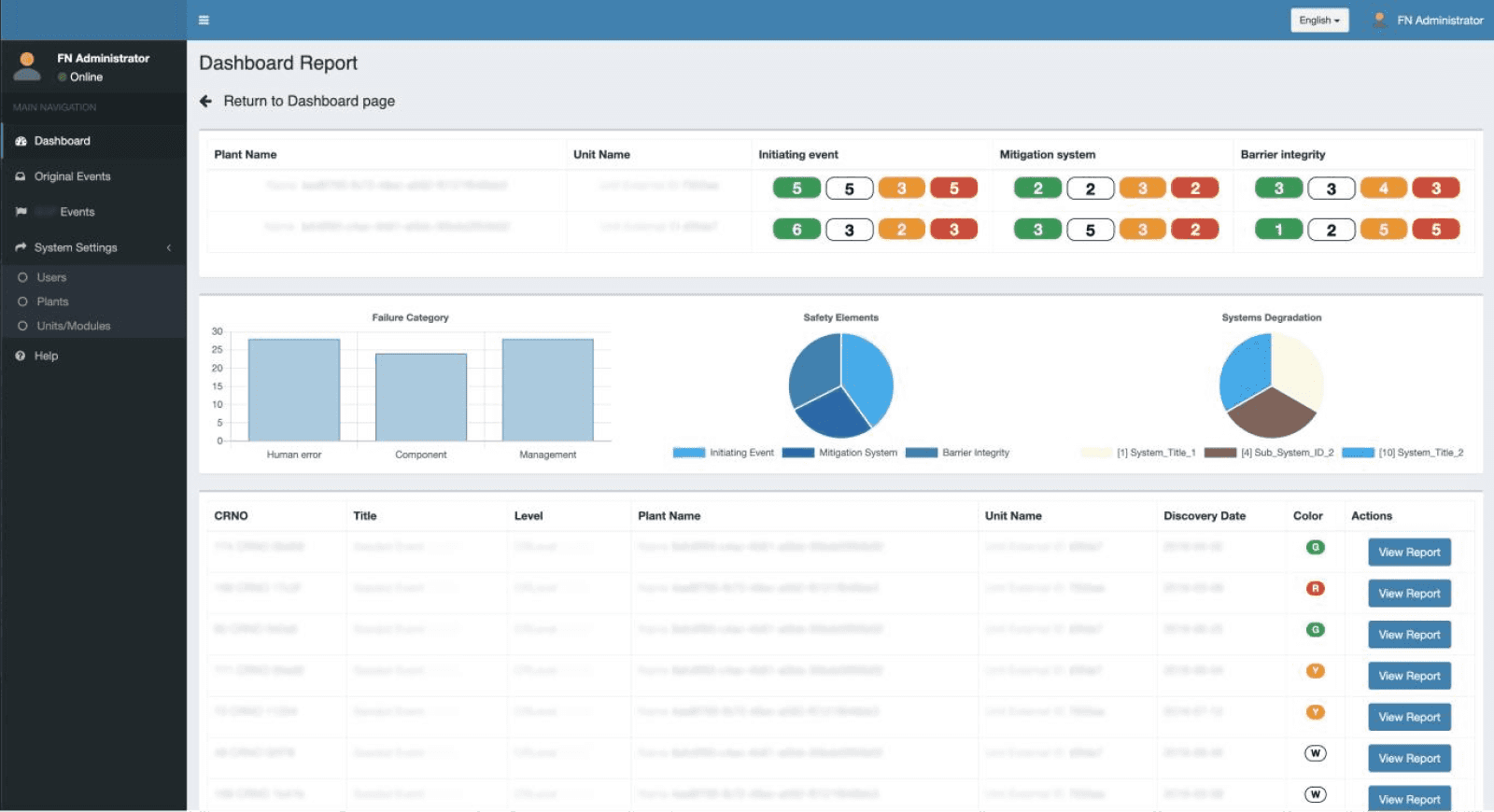
The solution analyzes an event, attributing it with severity and risk levels, which will determine further actions of risk management experts.
In the application, risk watchers can apply two methods of event analysis:
- Launching automatic calculations. The specialists get risk categorization results after the solution runs an algorithm that calculates risks based on preset parameters. The risk calculation algorithm had been previously developed by our customer.
- Filling in event data by answering Yes/No questions. Each event type is connected to a specific set of questions and parameters. Answers are registered in the system, which analyzes them to assign the risk level for the event.
Itransition’s team automated the configuration of the questions and answers as well as outcomes assessment. This process is carried out through a sequence of steps:
1) Providing the event details:
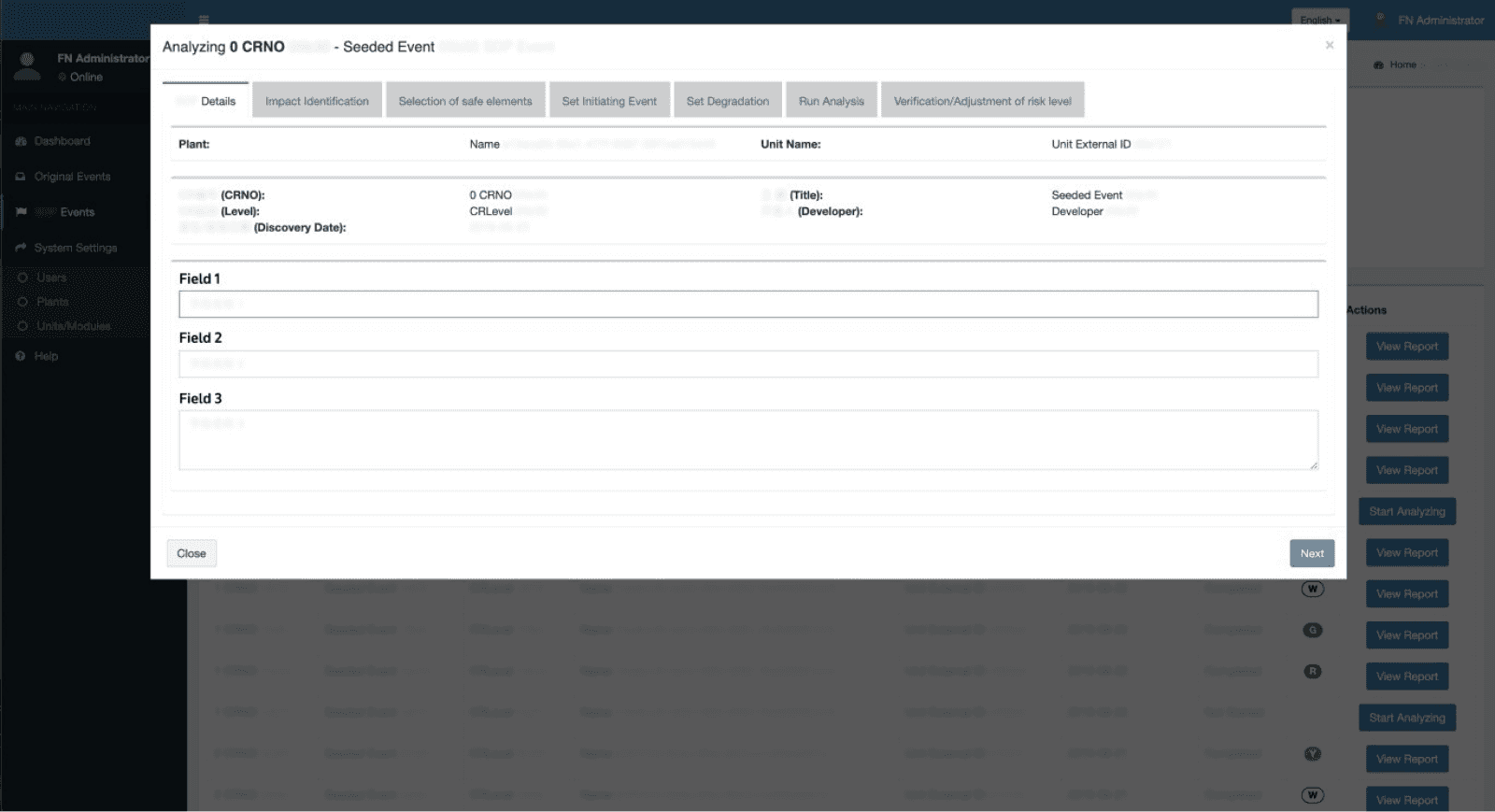
2) Identifying the event’s impact by answering questions about its initiation, mitigation system, and barrier integrity:
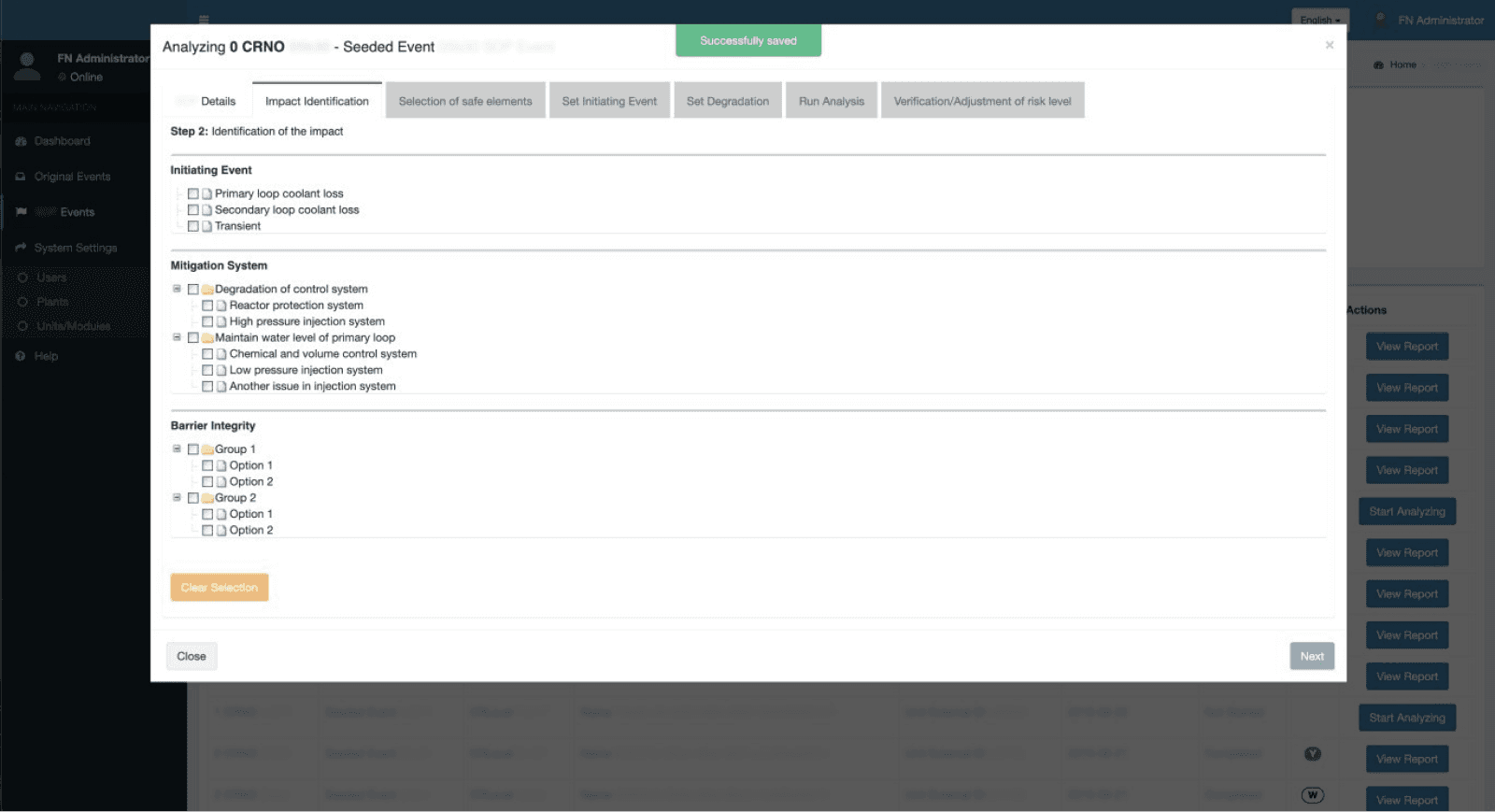
3) Selecting safe elements:
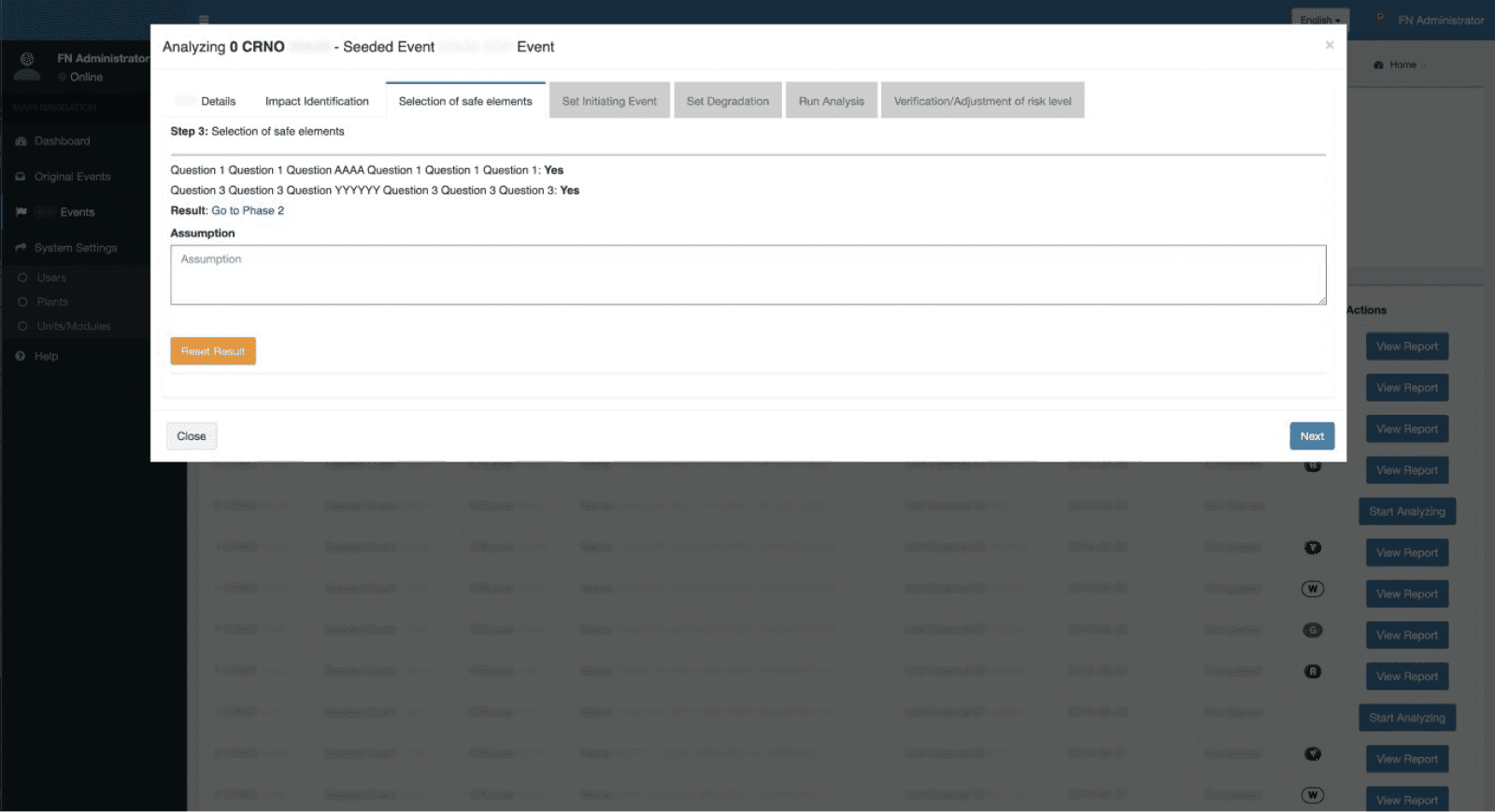
4) Setting an initiating event by assigning the event type either leading to the plant shutdown or degradation over time:
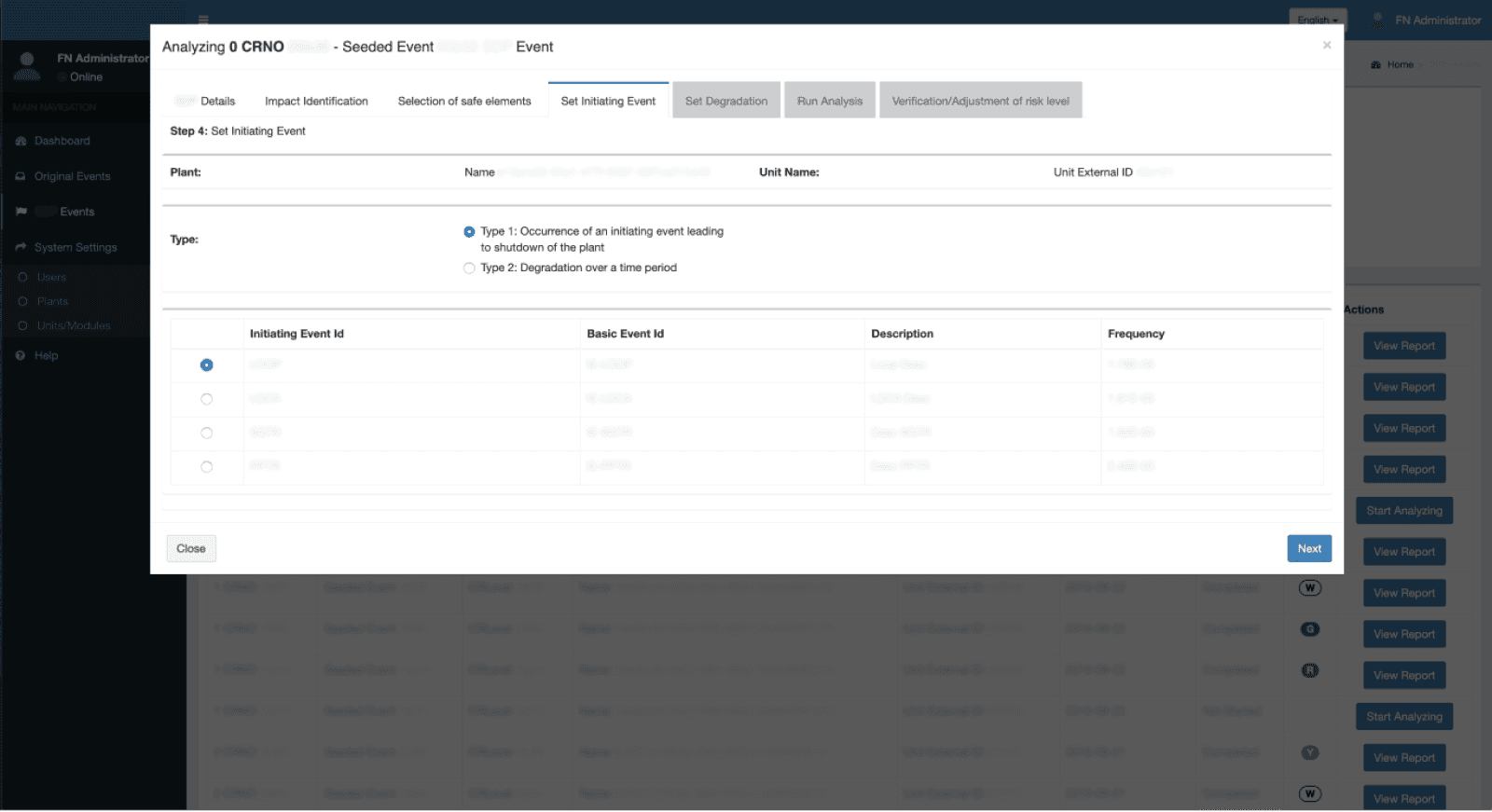
5) Setting degradation description (location in the system, component, and failure mode):
%5B1%5D.png)
6) Running event analysis:
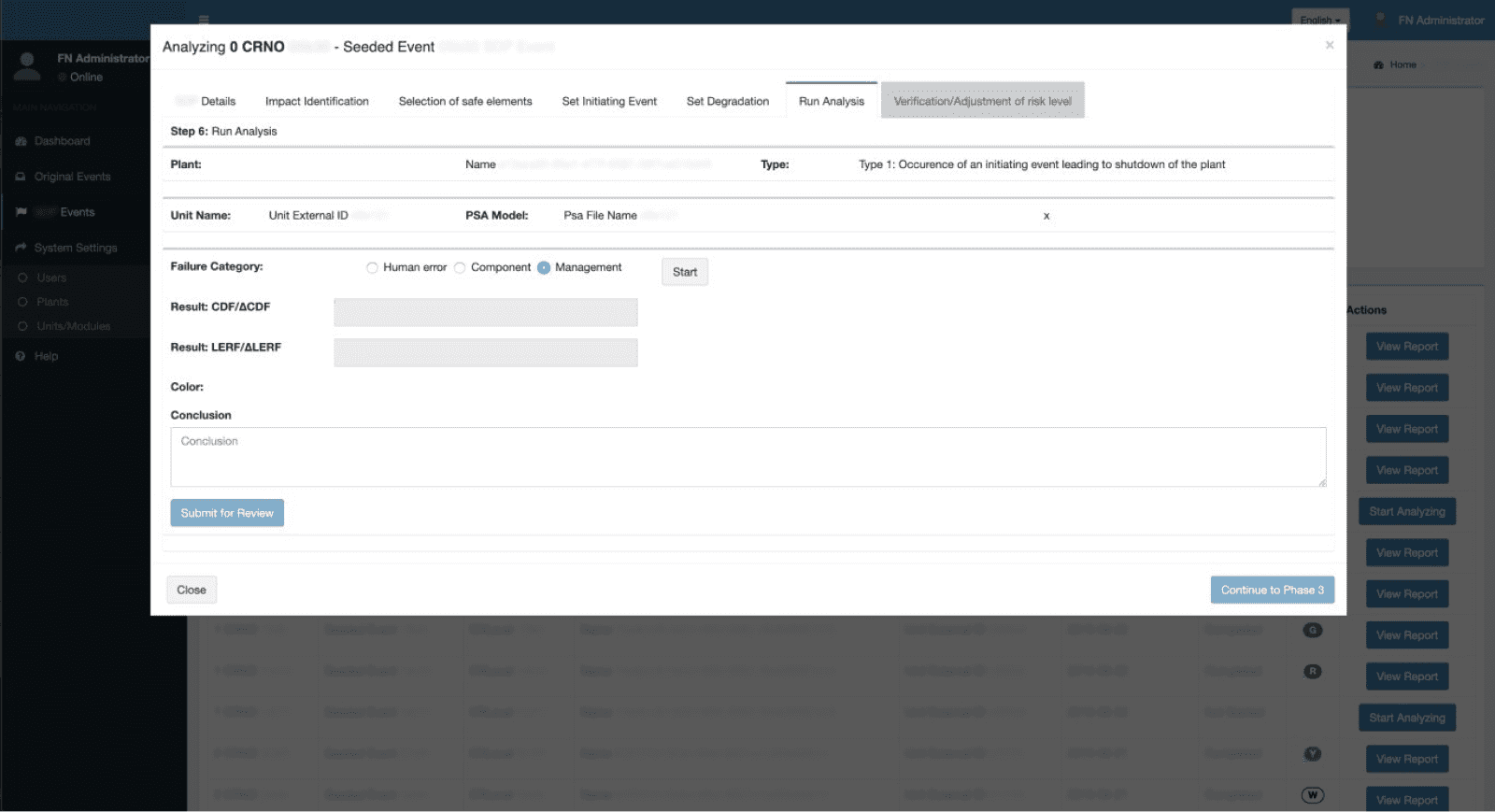
7) Verifying the risk level:
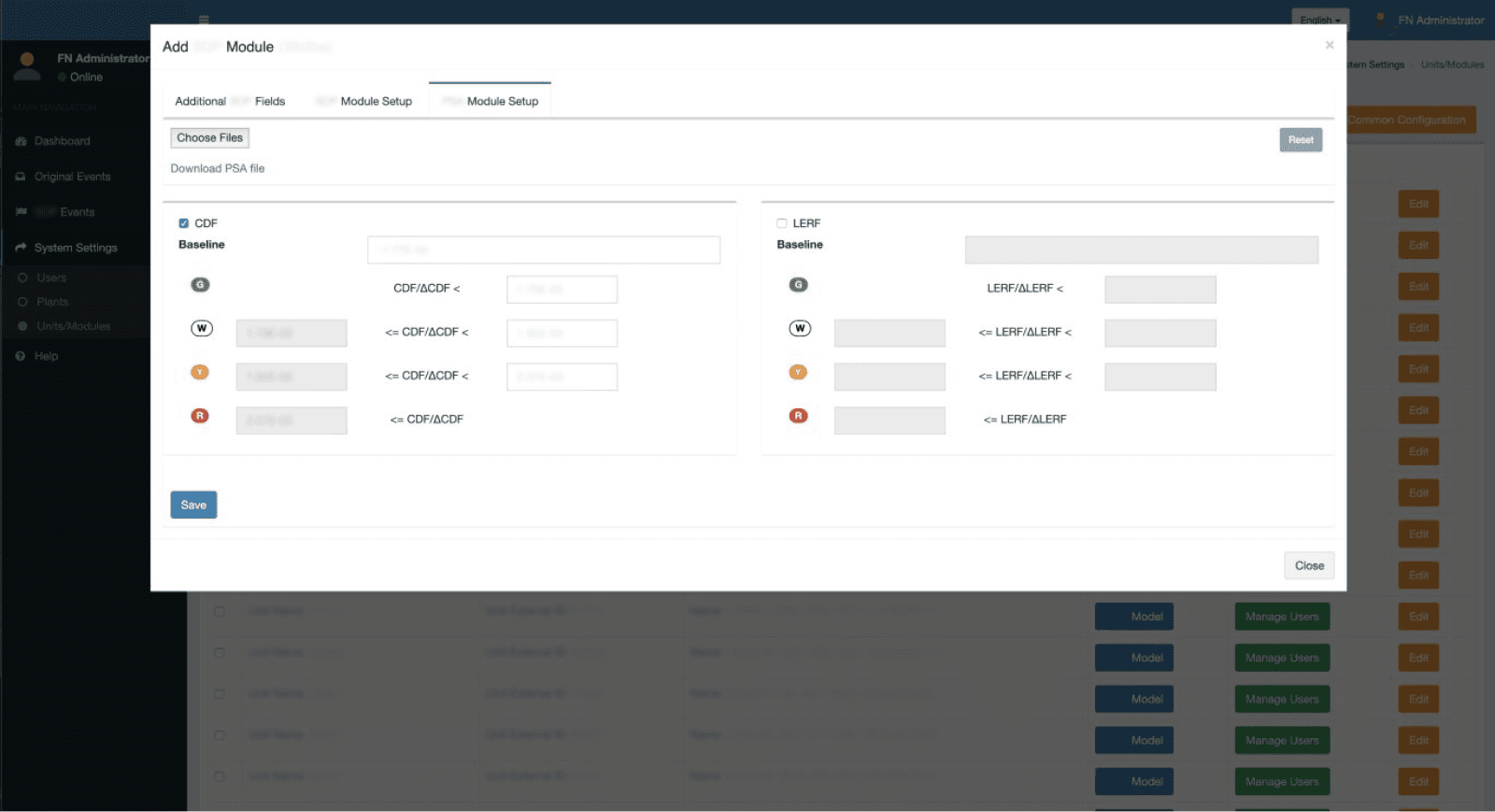
Process
During the two-week orientation workshop, Itransition’s team studied the business logic of the legacy system, its architecture, and related documentation. We analyzed the project and created a detailed roadmap for the remote team to rely on, even without the access to the project knowledge base.
During the workshop, Itransition’s team performed the following activities:
- Collected and refined the customer’s requirements
- Designed the detailed mockups of system modules and presented them to the customer
- Created the development cycle cards with tasks
Itransition also suggested to test the new system before its release and provided QA experts who performed the testing activities. We fixed all discovered bugs and delivered a ‘healthy’ solution to be deployed to the customer’s cloud.
To facilitate the exchange of feedback based on the iteration results, we provided the customer with the web app access accounts using a demo hoster. At the end of each two-week sprint, we delivered demos to the customer.
To deploy the solution in the customer’s environment, Itransition’s team set up and configured CI/CD workflows on top of TeamCity and SonarQube in AWS, both running on Linux.
To let the system run event analysis calculations and identify risk levels automatically, we integrated it with the client’s proprietary software. The integration allowed risk watchers to import events as Excel files from external systems. We also developed an emulator to verify the integration functions smoothly on the customer’s side after the system launch.
Technologies
Since the customer had very little time to accomplish the project, Itransition’s team offered to develop the system with a simple and easy-to-maintain architecture. This new scalable architecture was created with the backend based on ASP.NET Core (mediatR) and the frontend based on React (webpack).
Results
Our scrupulous attention to the requirements and expertise in redesigning legacy software helped us develop a cross-platform web application using minimal resources. Our team organized and set up efficient project workflows, which allowed releasing the system in just two months.
The delivered solution now serves the nuclear power plant’s risk assessment and management experts, who can now have a 360-degree view of all the events happening at their enterprise. By detecting risky events timely, experts can prevent their escalation and major impact on the enterprise operations.
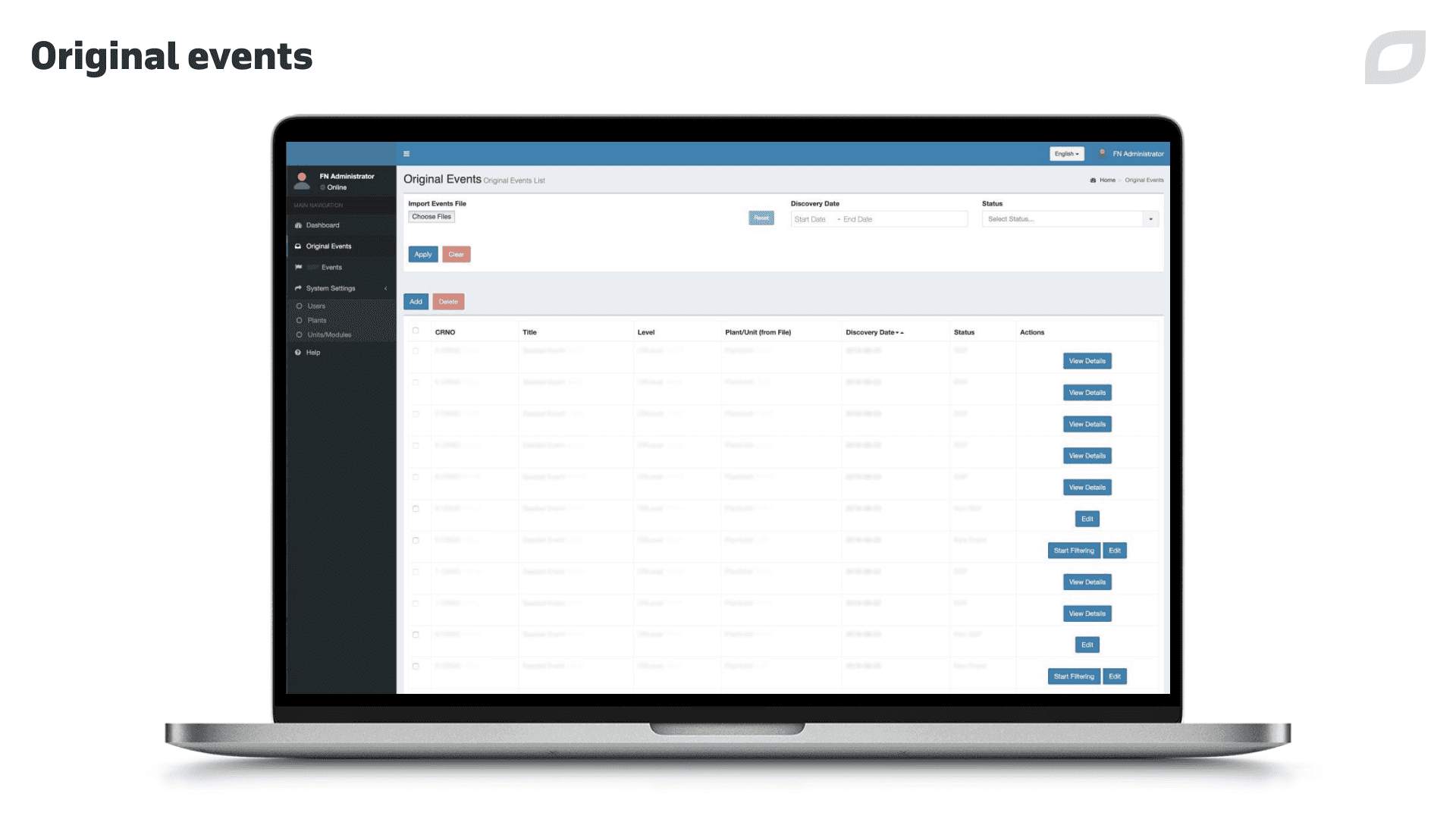
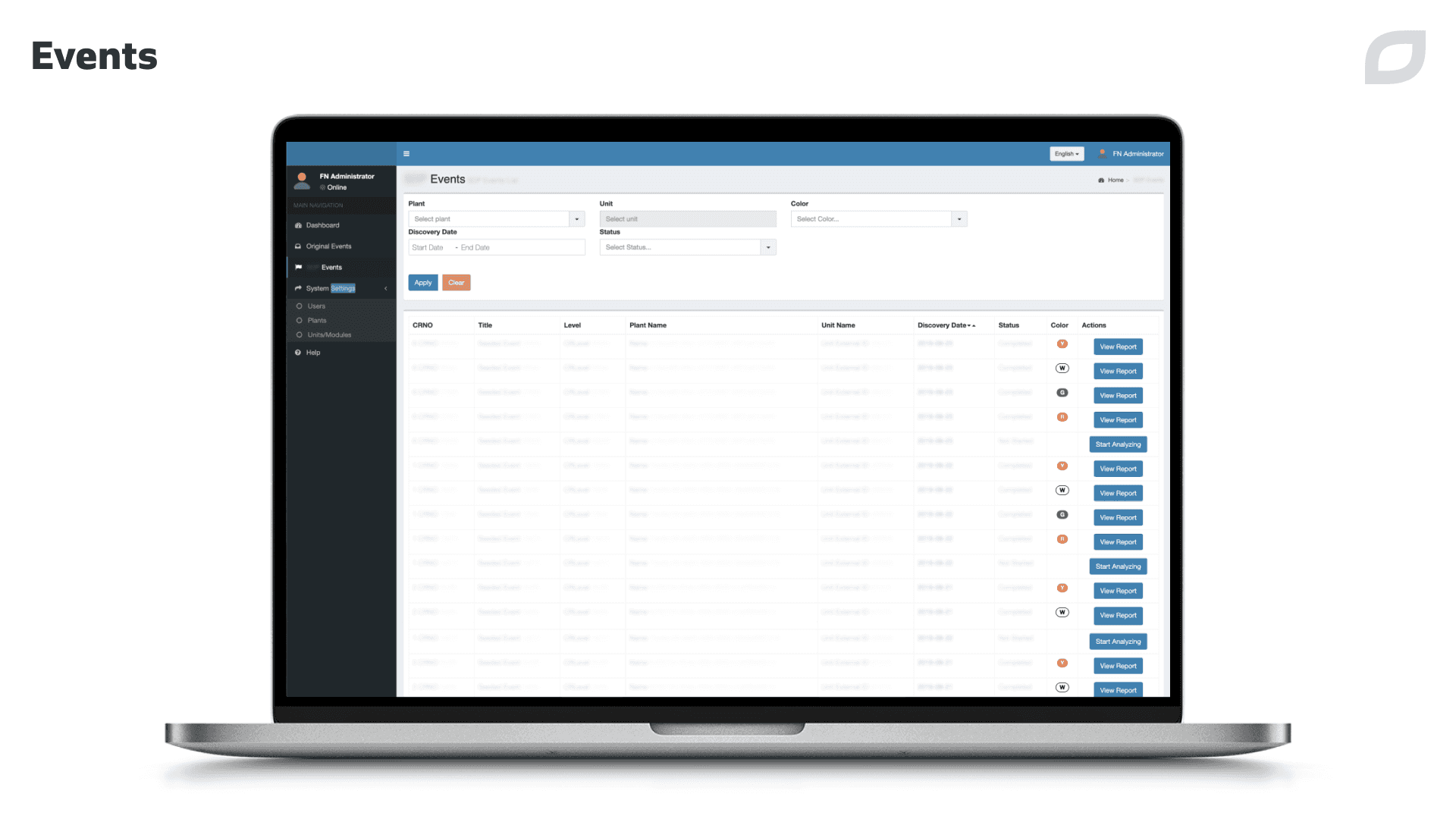
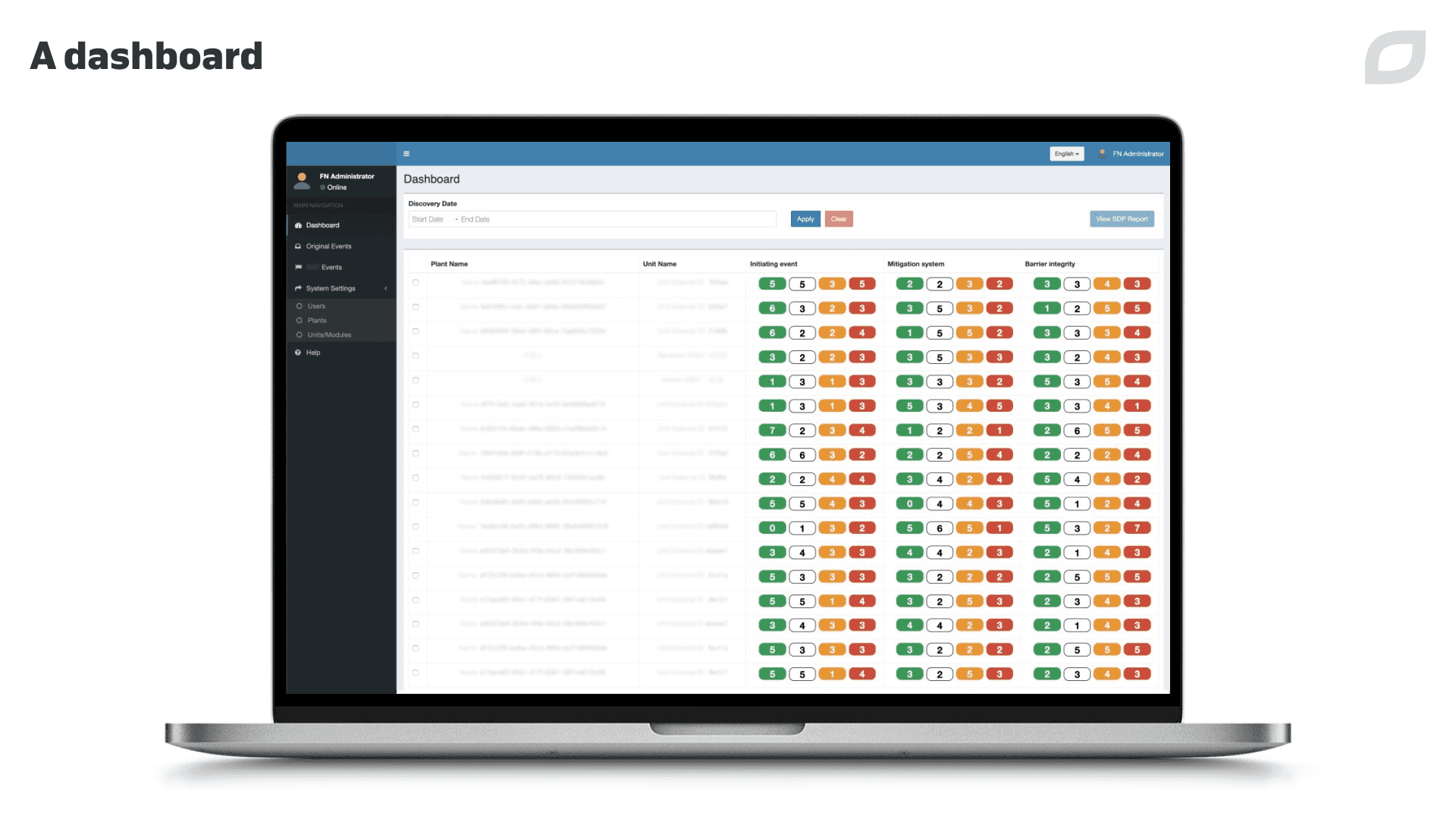
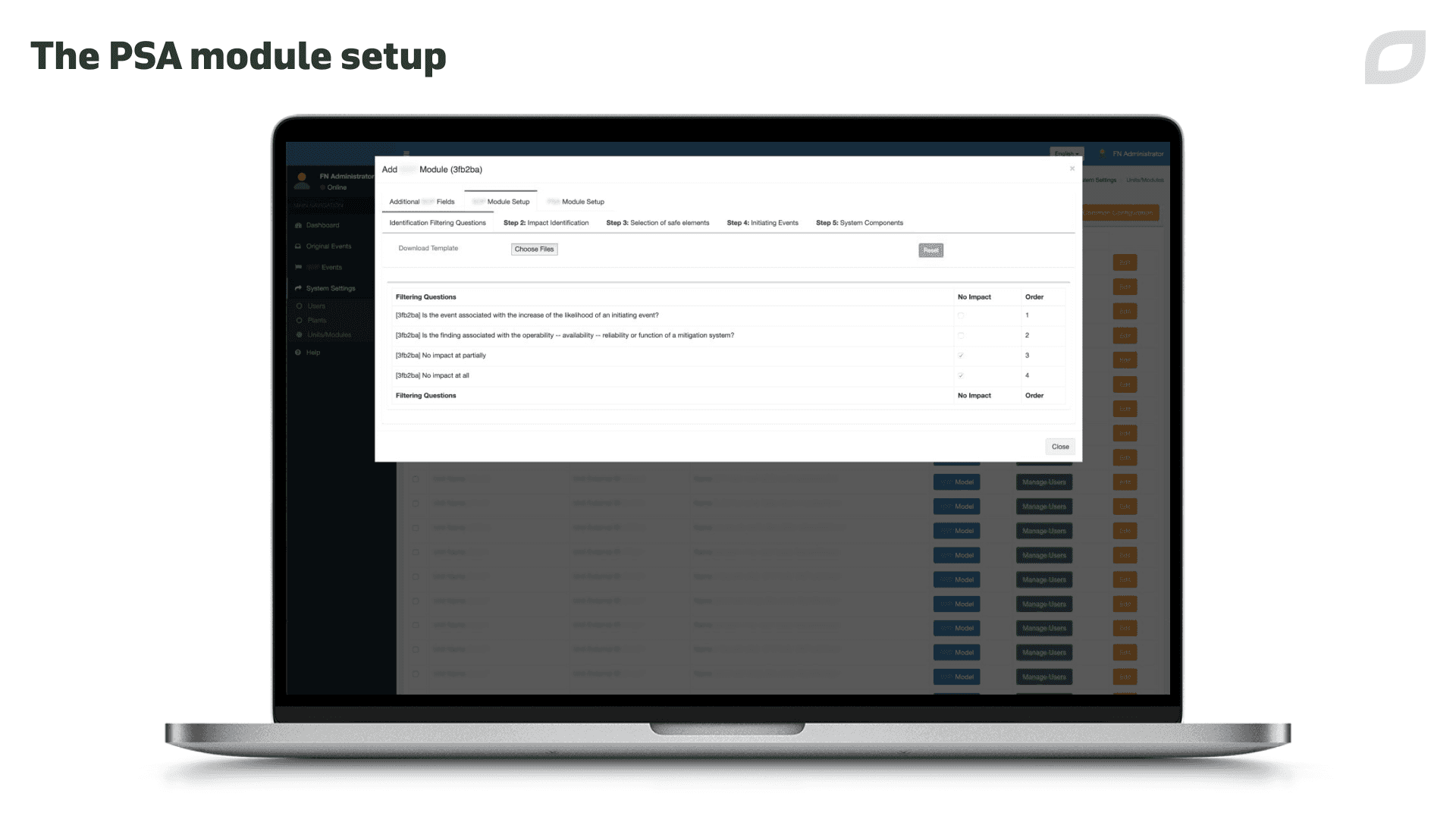

Services
IT consulting
Our technology consultants help enterprises across industries adopt the right software to achieve their business goals. Contact us to discuss your project.

Case study
Cloud business intelligence system for vehicle manufacturers
Find out how Itransition migrated a BI suite to the cloud and delivered brand-new cloud business intelligence tools for the automotive industry.

Case study
BI platform with AI and computer vision for a fashion retailer
Learn how Itransition delivered retail BI and deployed an ML-based customer analytics solution now processing 10TB of data.